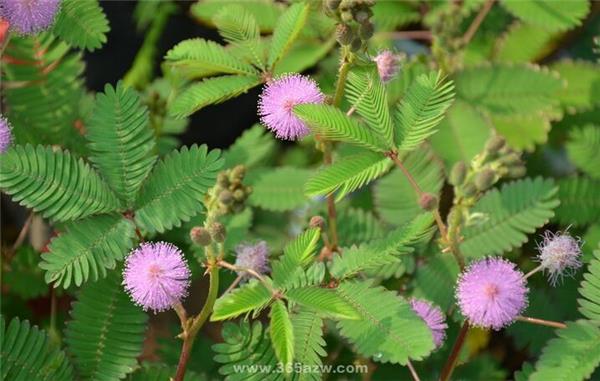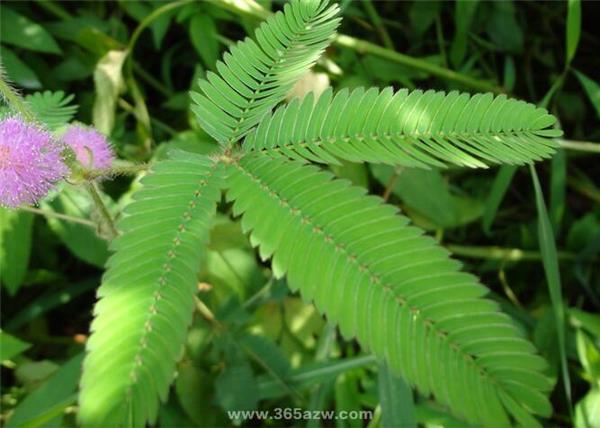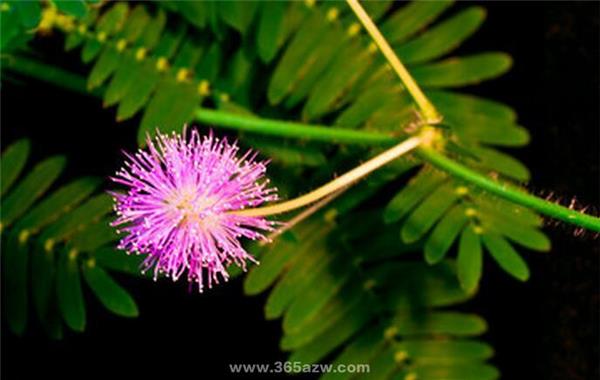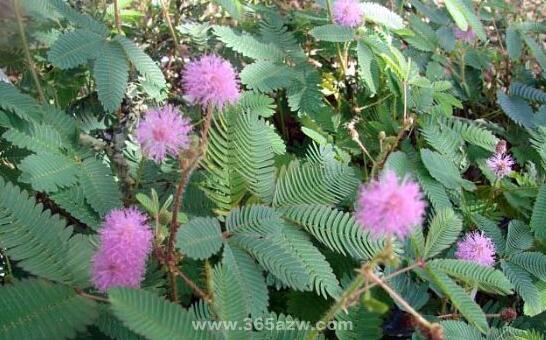What are the characteristics of mimosa?
Mimosa is a very strange plant that folds its leaves after being touched. What are the characteristics of mimosa? Let's take a look at it together.

Mimosa, alias: mimosa, mimosa. Families and genera: characteristics of the genus mimosa of Leguminosae: perennial herbs. Potted plant height 20~40cm, the whole plant with hair and prickles. Heads, axillary flowers are light pink, leaflets are extremely sensitive to external stimuli, closed and drooping when touched, and then return to their original state. In winter, more than 10 ℃ in the north can survive the winter indoors, which is an interesting ornamental plant. Native to tropical America, do not choose soil, like a warm climate, require plenty of sunshine, not cold-resistant.
The sowing items of mimosa are as follows: sowing season: January-December flowering season: January-December sowing to flowering: about 60 days of germination temperature: 15-25 degrees germination days: 7-12 days suitable temperature for growth: 10-35 degrees mimosa not only closes the leaflets and the petiole droops at night, but also closes in pairs during the day when some of the leaflets are shaken. If the stimulus is strong, the stimulus will be quickly transmitted to the adjacent leaflets, and even to the entire leaflet of the compound leaf, when the petiole of the compound leaf is drooping. If the stimulation intensity is larger, it can even make the leaflets of the whole plant close and the compound leaves droop. But after a period of time, the original state can be restored. Mimosa responds quickly to vibration, and begins to respond after 0.1 s of stimulation, which is completed in a few seconds. Stimulation was transmitted quickly in mimosa, up to 40-50 cm/s. The drooping of the compound leaf of mimosa is caused by the change of cell tension in the pillow at the base of the petiole of the compound leaf.

Mimosa, native to tropical America, is a perennial herb of the genus Mimosa of Leguminosae. Because of its unique physiological habits, it has many nicknames, such as Mimosa, Mimosa and so on. But the reason why mimosa has so many nicknames is because of its characteristics.
1. The most important feature of mimosa is that when it is stimulated (such as touching), the leaves of mimosa will contract and come together. If the stimulus is strong, the stimulus will be quickly transmitted to the adjacent leaflets, and even to the entire compound leaflet, causing the petiole to droop. If the stimulation intensity is larger, it can even make the leaflets of the whole plant close and the compound leaves droop. But after a period of time, the original state can be restored. Mimosa also responds quickly to vibration, which begins to respond after 0.1 s of stimulation and is completed in a few seconds.
2. Mimosa also closes the leaflets in the dark, and the petioles droop. During the day, when some of the leaflets are shaken, they also close in pairs. It is more sensitive when the light is weak, and the water in the leaf pillow usually supports the leaf, but when it is stimulated by an external force, the water in the leaf pillow will immediately flow elsewhere, closing the leaves of the mimosa. In addition, it automatically contracts at night (that is, sleep exercise). This uniqueness is the source of the mimosa name and nickname.

3. Because of its strong vitality and messy growth, mimosa is classified as grass in many places, but in fact it will blossom. Mimosa blossoms from July to October every year, but its flowering period is so short that it dies after flowering for less than two days. The flower is pink, the head is spherical and shaped like a fluffy ball. It will also bear pods after flowering, and the fruit is flat and round.
4. The flower language of mimosa is sensitive, shy and polite. Gently touching the leaves of this plant will immediately close and droop, even if a gust of wind blows, just like a shy girl, so its flower language is shy. The person who is blessed by this kind of flower is very shy and timid, and is very afraid of life. The feeling is particularly sharp, and the self-esteem is strong. Mimosa these special skills, people can not help but like it. If you plant such a mimosa at home, it will close its leaves when you touch it when you are upset. Isn't it fun?

The above is the introduction of the characteristics of mimosa. I hope today's article will be helpful to you.
Related
- Wuhan Hospital Iron Tree Blooming Result Was Instantly Frightened by the Gardener Master
- Which variety of camellia is the most fragrant and best? Which one do you like best?
- What is the small blue coat, the breeding methods and matters needing attention of the succulent plant
- Dormancy time and maintenance management of succulent plants during dormancy
- Minas succulent how to raise, Minas succulent plant pictures
- What are the varieties of winter succulent plants
- How to raise succulent plants in twelve rolls? let's take a look at some experience of breeding twelve rolls.
- Attention should be paid to water control for succulent plants during dormant period (winter and summer)
- Watering experience of twelve rolls of succulent plants
- Techniques for fertilizing succulent plants. An article will let you know how to fertilize succulent plants.



